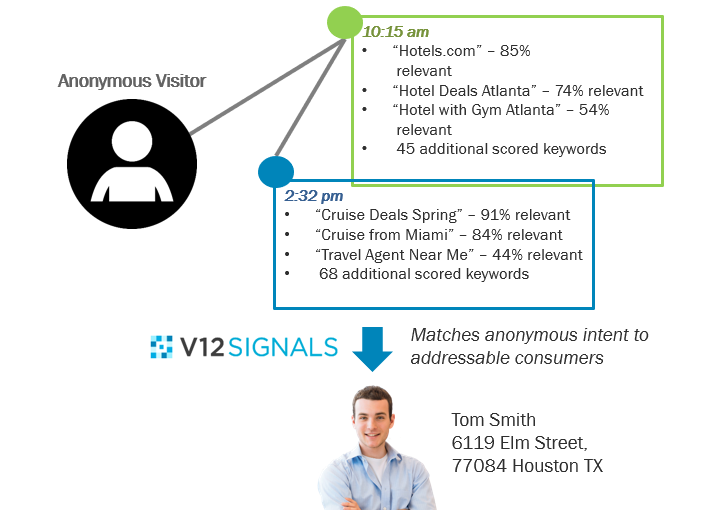In a report by WBR Insights, 80% of digital marketers stated they are feeling great pressure to meet customer acquisition and revenue goals, stating that they feel like they are “running on a never-ending hamster wheel”.
According to the research, 23% of respondents cited differentiating from competitors as the biggest challenge. Other obstacles include privacy concerns and regulations (19%), increasing costs of current channels (16%) and internal issues such as limited resources (16%).

One of the biggest obstacles contributing to the customer acquisition challenge is trying to get a consumer’s attention and break through the crowded marketplace of competing advertisements, emails, videos, social posts and so forth.
Brands rely heavily on customer discounts, coupons and promotions to try and break through the noise. 80% of marketers believe that sales promotions and discounts are extremely important or somewhat important.
However, offering discounts have become such a standard tactic that brands are virtually offering the same discount to all their customers versus offering to select groups. 61% of respondents say they regularly use universal price discounting as a customer acquisition tool. These promotions are prevented from achieving higher conversion rates due to:
- Customer fatigue or conditioning to discounts (55%)
- A lack of differentiation (54%)
- An inability to target a specific segment (53%)
Rather than trying different strategies to achieve differentiation, 56% of retail marketers believe that increasing the level or frequency of discounts will increase sales.
The research boils down to the fact that a large portion of marketers (67%) rely on promotions and discounts to acquire customers and increase sales, however 65% also worry that running more promotions will devalue their brand, reduce margins or condition consumers to expect discounts.
With the vicious cycle of trying to constantly compete on discounts to acquire more customers, brands must look at alternative ways to bring in new customers.
Compete on the Customer Experience
Customer experience is more important than ever in fueling both customer acquisition and retention. As products and services become more commoditized and consumers have more choices, customer experience will become a critical factor in achieving competitive differentiation. Understanding a consumer’s lifestyle, purchase behaviors, channel preferences and so on will drive higher engagement with consumers, and in turn, encourage new customers to do business with your brand.
Brands who prioritize customer experience are generating positive results across the business:
- A good customer experience means your customers spend more (Temkin Group):
- 86% of buyers are willing to pay more for a great customer experience
- 73% of buyers point to customer experience as an important factor in purchasing decisions
- 65% of buyers find a positive experience with a brand to be more influential than great advertising
- Companies that are experience-led have 1.6x higher brand awareness, 1.5x higher employee satisfaction, and 1.9x higher average order value. Experience-led businesses also have 1.7x higher customer retention, 1.9x return on spend, and 1.6x higher customer satisfaction rates. (Forrester)
- Organizations classifying themselves as “very advanced” at customer experience are almost three times more likely than their peers to have exceeded their top 2018 business goals by a significant margin. (Adobe Digital Trends Report)
Email Beats Social by 40X for Customer Acquisition
Email continues to grow in importance. Each year, channels for acquisition and retention are analyzed and time again, email reigns supreme.
Email marketing delivers the highest in terms of ROI for marketers. For every $1 spent, email generates an average of $38 in ROI.

Of course, the same techniques that worked ten years ago do not necessarily apply today. Email has become much more sophisticated. When personalizing emails, greeting your prospects and customers by first name is nice, was enough but personalization in today’s day and age goes well beyond that. Studies have shown emails with personalized subject lines are 26% more likely to be opened than those without, and revenue is 5.7 times higher in emails that employ personalization. (Campaign Monitor)
In a survey by Campaign Monitor, marketers were asked about their top goals and biggest challenges for their email marketing strategies – 38% said improving email personalization was their number one goal, and 36% of marketers listed email personalization as their biggest challenge.
When marketers were asked about what they felt the most effective email personalization tactics were for email marketing purposes, the top three tactics included:
- Email list segmentation – 56%
- Individualized email messages – 54%
- Behavior-triggered emails – 45%

Reach In-Market Consumers Actively Shopping for Products and Services You Sell
Imagine being able to pinpoint and prioritize spend on just those consumers who are showing active intent to purchase the products and services you sell. As data has become more sophisticated and technology more advanced, marketers are able to do just this.
For example, life events are a strong indicator of purchase intent. Perhaps you have segmented your customer database by demographics to create a look-alike audience for acquisition. Although an audience based on the same demographics may look the same, they will most likely have very different lifestyles, wants and interests.
However, when segmenting using a life event such as a new mover has has purchase a home, the demographics may be very different but each consumer is most likely in market for insurance.

While this is a very simple example and many data points are often analyzed when creating a look-alike audience, the basic concept of the impact of life events is very apparent.
Another way to reach in-market consumers is to utilize online browsing behavior. Porch Group Media provides a solution called Porch Group Media Signals Online, which is actual online behavior data collected in real-time leveraging a broad network and techniques to discover behavioral keywords, phrases, and terms. Using this intelligence, we are able to create complex and effective formulas, which classify user intent. The result is an in-depth insight into browsing habits, which enables us to identify leads and execute a marketing strategy focused on relevant and highly precise outreach.
The solution evaluates online consumption behavior on 91% of accessible devices in the US every month; utilizing millions of sites across billions of devices.

Porch Group Media also enables brands to reach consumers by mobile location. Porch Group Media Signals Mobile is an innovative mobile solution that enables companies to market to households expressing active intent to purchase based on their shopping behavior.
Targeted customer acquisition strategies can ensure companies acquire customers in the most cost-effective way. Customer acquisition should also go hand in hand with retention. It costs much more to acquire a new customer than to keep an existing one, so once you gain valued new customers, be sure to have the strategies in place to earn their loyalty and repeat business.
Learn how Porch Group Media can help you get to know your customers better and reach them across channels to boost your marketing success. Contact us to get started!




